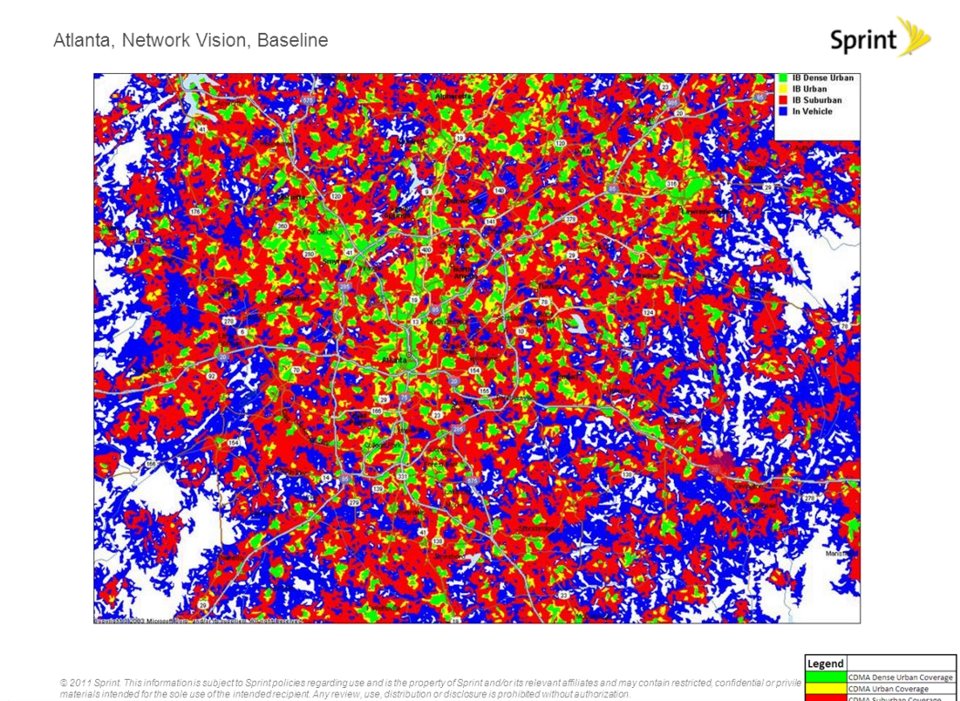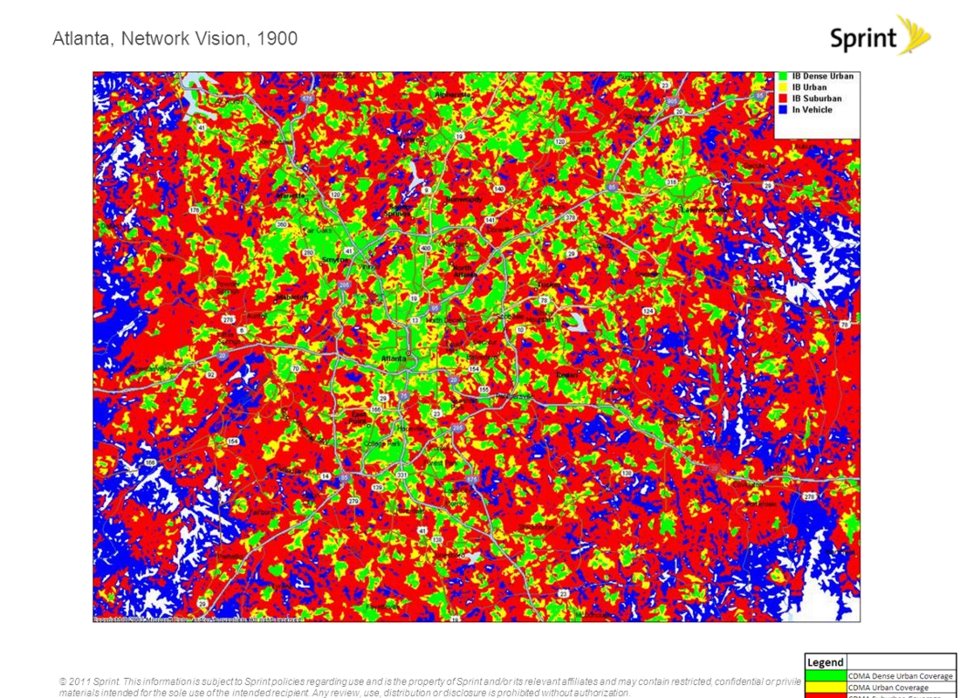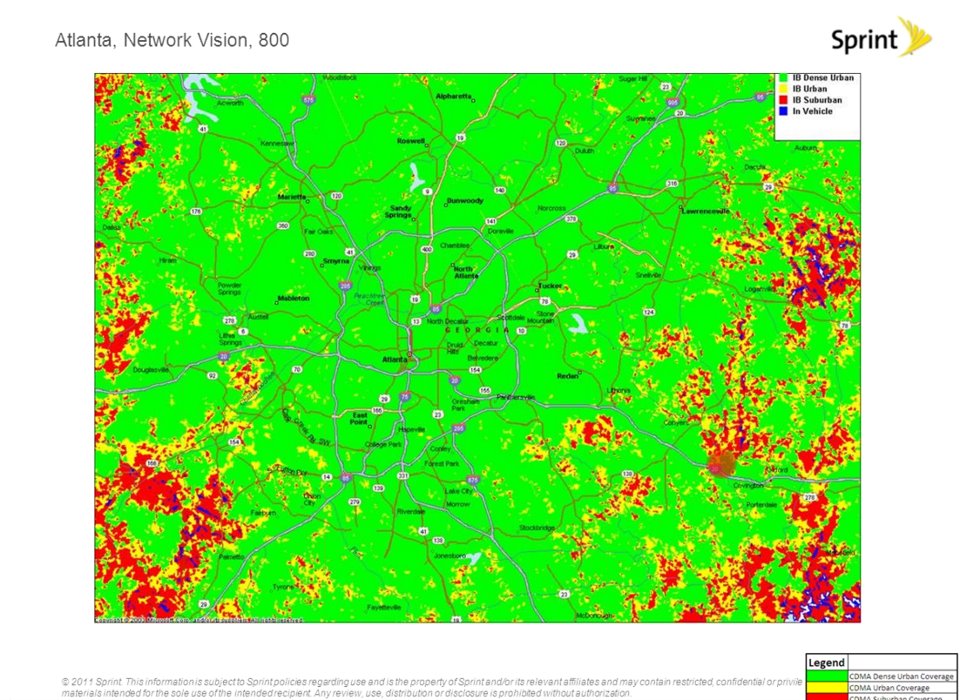New Network Vision and LTE Deployment info released in Sprint Webinar today
 by Robert Herron
by Robert Herron
Sprint 4G Rollout Updates
Monday, December 12, 2011 - 2:59 PM MST
Today, Sprint hosted a Webinar online talking to large Enterprise customers about Network Vision and LTE. And of course, Sprint 4G Rollout Updates signed in and went along for the virtual joy ride. It was an informative presentation, although brief and missing lots of nerdy details that we would have loved.
The webinar was hosted by John Barcomb, a Sprint Network Development Manager. He steadily went through most of the basics of Network Vision and 4G LTE deployment over an hour. Many of the familiar NV presentation slides were used, as well as a few new ones.
A point that Mr. Barcomb repeated several times is ‘while we are in the neighborhood with Network Vision, we will be adding LTE.’ This is a point he stressed and reiterated to make it clear that even early Network Vision markets will be receiving full LTE-1900 deployment. This is an appreciated point, because I have heard comments from several people concerned that the early Network Vision deployments may not include LTE. Sprint repeatedly has said their LTE deployment will begin in Summer 2012. However, in reality, Sprint’s LTE deployment is under way right now. It’s just that the first LTE devices that will be able to run on it will not be public until Mid 2012. Also, the repeated point is also likely to emphasize that LTE is going system wide over the entire Sprint network.
Mr. Barcomb says that Sprint will release specific deployment information in the future, but have not to date because of the recent decision to accelerate Network Vision. Every aspect of Network Vision had to be re-reviewed and many markets had to be reorganized and replanned as a result. Now in hindsight, it probably was a good idea that Sprint hadn’t released a rollout schedule, yet. Can you imagine the frustration and chaos that would have emerged if your city was announced and then pushed back? Now, none of us is the wiser.
Additional details that emerged from the webinar include:
- Kansas City. KCMO/KCKS will be one of the first Network Vision markets. As Mr. Barcomb said, “Surprise, surprise.”
- LTE Advanced. The way that Sprint is deploying their LTE network in Network Vision will allow it to easily upgrade to LTE Advanced when it comes to market in 2013.
- First NV Tower. The first Network Vision tower that was completed and went live last week is performing even better than they anticipated.
- Planning is complete on the first 22,000 sites. All the cell sites that are to receive Network Vision/LTE upgrades in 2012 (the first22k) have been fully surveyed and planned. With this work complete they are able to proceed with scheduling and material ordering. This represents about half of all the towers that will remain after Network Vision. Planning for the rest of the sites is presumably under way now or in the very near future.
- Tower Agreements. All the tower agreements are complete allowing work to commence per their schedule.
- LTE Devices. Contracts for initial LTE devices have been completed with OEM’s.
- Reducing number of towers. Although the number of total towers is being reduced from over 60,000 to approximately 40,000, Mr. Barcomb reiterated that only redundant towers will be removed. The very high percentage of them being Nextel iDEN towers. The amount of 1900 PCS coverage will not go down, but will go up. And when you consider the 800MHz coverage that will be coming online in 2013, the amount of coverage will substantially grow, even from the reduced amount of towers.
- Sprint Direct Connect. Sprint’s new PTT (Push to talk) network called Sprint Direct Connect will be available on roaming partner networks in the first half of 2012. All current SDC-PTT devices already have the capability to PTT roam. Sprint Direct Connect is currently having equal or better connection times than iDEN. After Network Vision, it will be better in all places, except when roaming.
Sprint’s towers after Network Vision not only are going to provide better, faster and stronger service than now, but they will also be better than their competitors on similar frequencies. Part of Network Vision is that radios are being installed up high on the tower near the antennas, instead of down at the base station. This produces much more improved performance than originally theorized. And this will result in Sprint offering better signal and propagation than any other PCS or 800 MHz carrier, ever. In places where Sprint and Verizon broadcast the same frequency from the same tower, the Sprint user will have a stronger signal, further coverage and potentially faster data. This will be one of the best advantages of Network Vision.
In the slides below, Sprint is showing examples of what Network Vision will do for coverage in the case of Atlanta, Georgia. Seeing things like this is what gets me excited about Network Vision.
Before Network Vision. In this slide, you can see an example of what Sprint’s current PCS coverage in 1900MHz currently looks like in Atlanta. These colors loosely represent what you would experience on your phone’s signal strength indicator. Think of Green as 5/5 bars. Yellow as 4/5 bars. Red as 3/5 bars. Blue as 2/5 bars. White is one or zero bars. Click on image to enlarge slide.
After Network Vision. In this slide, you can see what the Sprint PCS 1900 coverage looks like in the Atlanta Metro Area after Network Vision. As you can see, the coverage is drastically improved. The amount of 5 bar, 4 bar and 3 bar coverage goes up, and the amount of poor or no coverage nearly goes away. This improvement is a result of superior radio performance in quality and distance that is gained from the way Network Vision is deploying. With radios up high on the tower near the antennas instead of down at the ground in the base station cabinet. Network Vision towers are even performing better than originally anticipated. Click on image to enlarge slide.
After 800MHz deployment. In the most dramatic slide of the Webinar, Sprint displayed how coverage would appear in the Atlanta Metro Area once 800MHz service is deployed in 2013. I nearly fell out of my seat. In this amazing image, you can see that most of the coverage area would have 5 out of 5 bars! And virtually every nook and cranny in the area would get a signal. And with 800’s great propagation characteristics, you could get a great signal inside virtually every building too. With Sprint’s 800MHz being deployed in Network Vision with the radios up high on the tower, Sprint’s 800 will likely perform noticeably better than AT&T and Verizon’s 700MHz. At least until AT&T and Verizon develop their own Network Vision type program. Click on image to enlarge slide.










0 Comments
Recommended Comments
There are no comments to display.